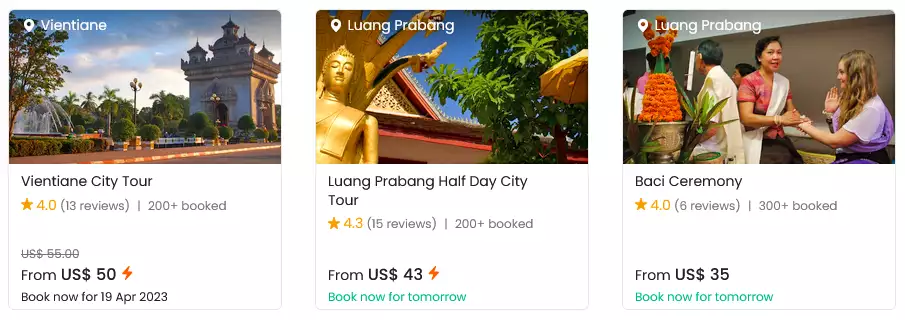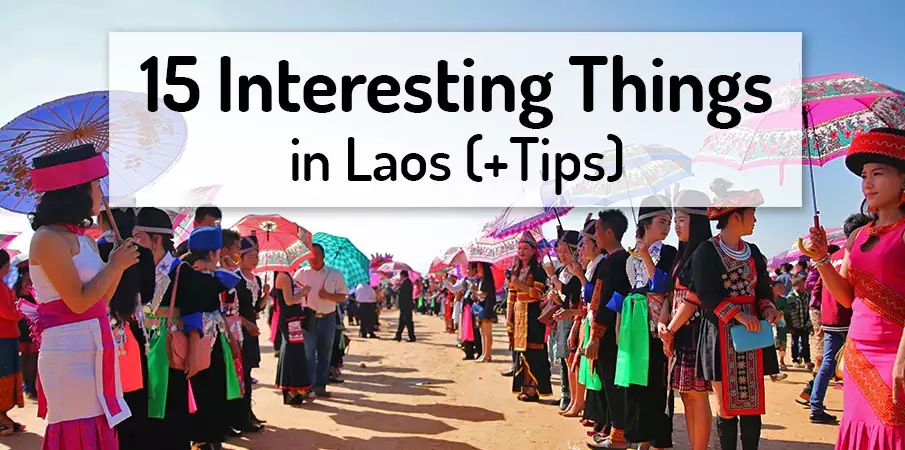
Quick answer: Laos is a hidden gem in Southeast Asia, offering a unique blend of untouched natural landscapes, deep-rooted cultural traditions, and warm hospitality. Visitors can immerse themselves in peaceful riverside towns, explore ancient temples, marvel at spectacular waterfalls, and experience vibrant local festivals that showcase the heart of Lao life. Whether seeking adventure, relaxation, or cultural enrichment, Laos provides a rich and authentic travel experience off the usual tourist path.
At a glance:
- 🌄 Luang Prabang: UNESCO city known for its temples and historic architecture.
- 🛶 Mekong River: Vital waterway offering scenic boat trips and lively river life.
- 🐘 Elephant Sanctuaries: Ethical spots to meet Laos’s gentle giants.
- 🏞️ Kuang Si Falls: Beautiful multi-tiered waterfalls in lush jungle.
- 🎭 Traditional Festivals: Celebrate Lao New Year with water fights and rituals.
- 🍜 Lao Cuisine: Try sticky rice, laap, and papaya salad.
- 🛵 Slow Travel: Explore by bike, scooter, or on foot at a relaxed pace.
- 🏯 Plain of Jars: Mysterious site with thousands of ancient stone jars.
Last updated in November 2025.
Discovering the Charm of Laos: 15 Intriguing Facts and Wonders.
-
- In the heart of Southeast Asia lies a well-kept secret, a destination that whispers tales of ancient civilizations and embraces visitors with serene landscapes. Laos, a landlocked gem, unfolds its treasures away from the bustling spotlight, inviting those seeking an authentic escape to delve into its unique wonders.
- As you traverse the charming landscapes of Laos, you’ll encounter a nation with a deep-rooted cultural identity and a tapestry woven with historical threads. The journey begins with the resonant moniker, the „Land of a Million Elephants,“ an evocative title steeped in symbolism. While the actual count may have dwindled, the presence of these majestic creatures resonates as a living testament to Laos‘ enduring strength, power, and reverence for tradition.
- The ancient town of Luang Prabang stands as a gateway to Laos‘ timeless elegance, beckoning visitors to wander through its cobblestone streets. Recognized as a UNESCO World Heritage Site, Luang Prabang unfolds a living canvas of well-preserved architecture, resplendent Buddhist temples, and vibrant night markets. Here, history intertwines seamlessly with the present, offering a glimpse into the spiritual and cultural heritage that defines Laos.
Savoring Serenity: Exploring the Culinary Kaleidoscope of Laos.
-
- The Mekong River, a lifeline weaving through the nation, adds another layer to Laos‘ enchantment. More than a mere waterway, the Mekong is a cultural pulse, influencing the rhythm of daily life and connecting communities along its meandering path. Its significance goes beyond the physical, shaping the very essence of Laos‘ identity.
- As we embark on this exploration, we’ll unravel the mysteries of the Plain of Jars, discover the harmonious symphony of Lao cuisine, and witness the Hmong New Year celebrations, all contributing to the rich tapestry that makes Laos a destination of unparalleled charm. Join us on this journey as we peel back the layers of intrigue, discovering the hidden gems that make Laos a sanctuary for those seeking tranquility and wonder.
- Nestled along the banks of the mighty Mekong River, Vientiane, the capital city of Laos, exudes a unique blend of timeless charm and modern simplicity. Here, French colonial architecture coexists with Buddhist temples, creating a captivating atmosphere that invites exploration. The city’s notable landmarks, including the iconic That Luang stupa and the Patuxai monument, reflect a harmonious blend of history and contemporary life.
BOOK a TOUR / ACTIVITY in Laos ➜
15 Interesting Things and Facts of Laos:
1. Land of a Million Elephants
-
- In the heart of Southeast Asia, Laos proudly wears the moniker, the „Land of a Million Elephants„, a title woven with cultural reverence and historical significance. Beyond the literal count, these majestic creatures embody strength, power, and good fortune in Lao traditions.
- Historically, elephants held sacred roles, symbolizing protection and prosperity in the ancient Kingdom of Lan Xang. Today, this symbolic connection persists, even as Laos grapples with the challenges facing its elephant population.
- While factors like habitat loss and the historical use of elephants in logging have impacted their numbers, Laos has emerged as a champion of conservation. The Elephant Conservation Center in Sayaboury province stands as a testament to this commitment, providing a haven for rescued elephants and promoting ethical tourism practices.
- Laos‘ journey with its elephants reflects a delicate dance between preserving cultural heritage and embracing environmental stewardship. The story of the „Land of a Million Elephants“ echoes not just a title, but a commitment to ensuring the survival and well-being of these revered creatures, symbolizing the enduring spirit of Laos.
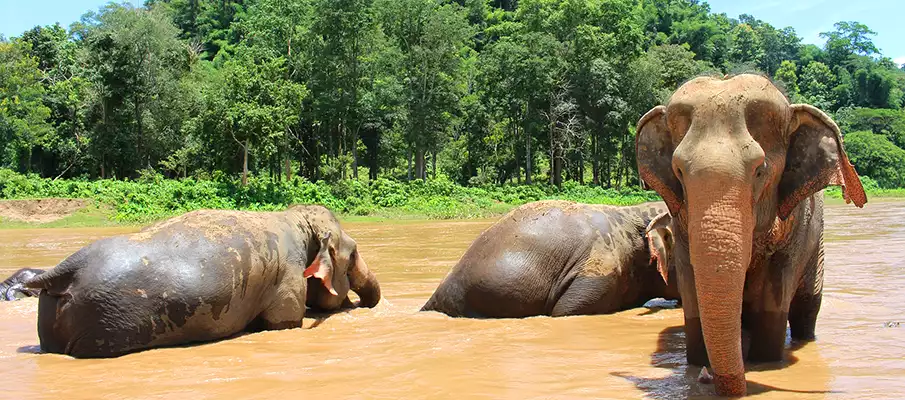
2. Luang Prabang: UNESCO World Heritage Site
-
- Nestled in the northern hills of Laos, Luang Prabang is a living canvas of history and spirituality, earning its place as a UNESCO World Heritage Site. This ancient town’s charm lies in its well-preserved architecture, where traditional Lao wooden houses and colonial influences create a picturesque tapestry.
- At the heart of Luang Prabang are its revered Buddhist temples, with Wat Xieng Thong standing as a 16th-century masterpiece adorned with intricate mosaics. The town’s spiritual ambiance is heightened by the daily almsgiving ceremony, a ritual that has endured for centuries.
- Beyond its historical core, Luang Prabang’s vibrant night markets add a contemporary vibrancy. Local artisans showcase their crafts, offering handmade textiles and traditional wares, creating a bustling atmosphere beneath the glow of lanterns.
- Luang Prabang’s UNESCO status not only honors its past but signifies a commitment to preserving its cultural authenticity. Strict regulations and community-driven initiatives ensure that the town remains a living museum, where history and tradition gracefully coexist, inviting visitors to immerse themselves in the enduring beauty of this cultural gem.

3. Mekong River: Lifeblood of Laos
-
- Flowing through the heart of Laos like a lifeline, the Mekong River is not merely a waterway but the pulsating lifeblood of the nation. This majestic river, one of the world’s longest, weaves a narrative of cultural significance, economic vitality, and natural beauty that defines the very essence of Laos.
- The Mekong’s journey through Laos shapes the landscapes it touches, offering fertile grounds for agriculture and sustaining communities along its banks. Beyond its practical implications, the river serves as a cultural pulse, influencing traditions, beliefs, and daily life in a symbiotic dance with the people of Laos.
- As the backbone of transportation, the Mekong facilitates the movement of goods and people, connecting remote villages to urban centers. Its waters host a variety of riverine activities, from bustling markets on floating boats to the serene passage of traditional wooden longboats, creating a dynamic tableau of daily life along its shores.
- The spiritual significance of the Mekong is embedded in Lao culture, with riverine rituals and ceremonies reflecting the harmonious coexistence of humanity and nature. The Mekong becomes a conduit for celebrations, a source of inspiration for traditional art, and a symbol of resilience in the face of the river’s ebb and flow.
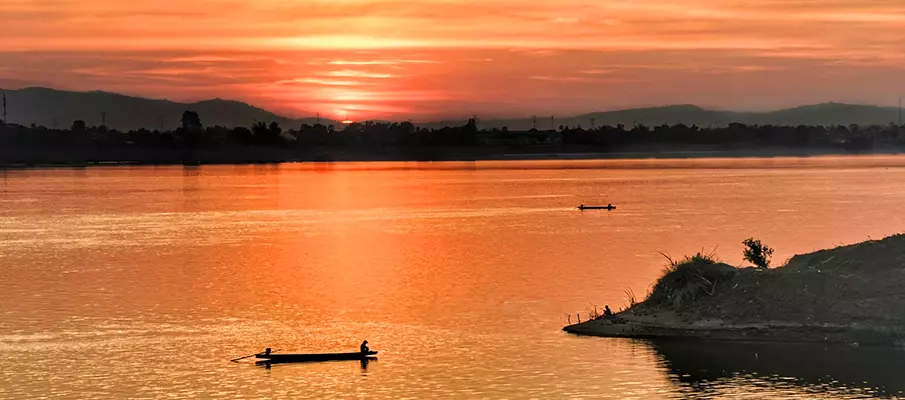
4. Plain of Jars: Ancient Mysteries
-
- Nestled in the rugged landscapes of northern Laos lies the enigmatic Plain of Jars, a captivating archaeological site shrouded in mystery. Dotted across the plain are thousands of colossal stone jars, ranging in size from small urns to massive vessels, creating an otherworldly panorama that has puzzled historians and intrigued travelers for centuries.
- Believed to date back to the Iron Age, the origin and purpose of these stone jars remain veiled in uncertainty, adding an air of intrigue to the landscape. Local legends suggest the jars were used for brewing and storing rice wine for a victorious ancient army, while other theories propose ritualistic or burial purposes.
- Despite the lack of a definitive explanation, the Plain of Jars has become a fascinating testament to Laos‘ ancient history and the resilience of its cultural heritage. Archaeological excavations have uncovered burial sites and artifacts, offering glimpses into the lives of the mysterious civilization that once populated this region.
- Exploring the Plain of Jars is a journey through time and mystery, where visitors can ponder the enigmatic remnants of an ancient culture against the backdrop of the serene Laotian countryside. While the mysteries of the Plain of Jars persist, the site stands as a testament to the enduring allure of Laos, a nation that continues to unveil its ancient secrets to those who venture into its heartland.
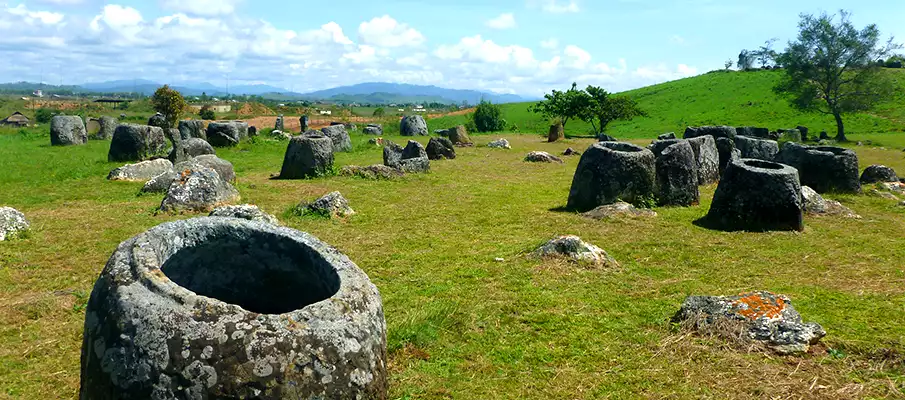
5. Traditional Lao Cuisine
-
- In the heart of Southeast Asia, Laos beckons not only with its breathtaking landscapes but also with a culinary tapestry that tantalizes the taste buds. Traditional Lao cuisine, a harmonious blend of flavors and textures, reflects the nation’s agricultural abundance and culinary creativity.
- At the heart of Lao dining is „Laap“, a minced meat salad bursting with aromatic herbs, lime, and chilies. This iconic dish embodies the balance of sweet, sour, salty, and spicy flavors that define Lao cuisine, showcasing the country’s dedication to freshness and bold taste experiences.
- Sticky rice, known as „Khao Niew“, is a staple that accompanies nearly every Lao meal. Served in bamboo baskets, the sticky rice acts as the perfect vessel for sopping up flavorful sauces and complementing the diverse array of dishes.
- A journey through traditional Lao cuisine reveals the influence of neighboring countries, with dishes such as „Tam Mak Houng“ drawing inspiration from Thai cuisine. This spicy green papaya salad, infused with fish sauce, lime, and garlic, is a refreshing and zesty delight.
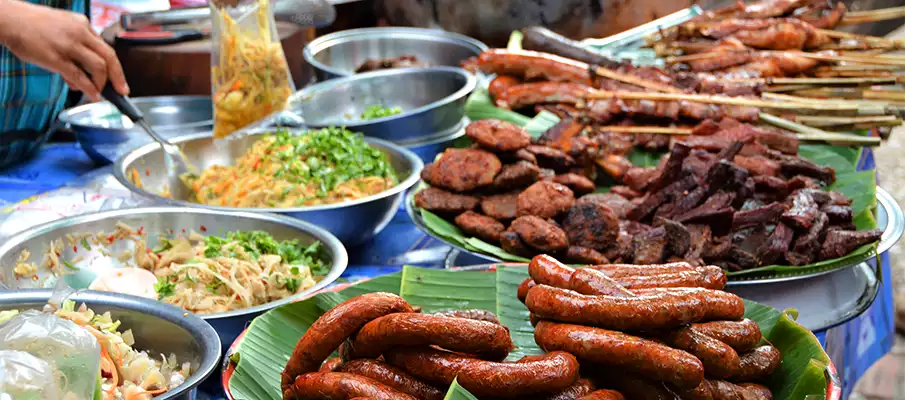
6. Baci Ceremony: Spiritual Ties
-
- In the heart of Laos, the Baci ceremony stands as a poignant expression of cultural unity and spiritual connection. Rooted in animist traditions and deeply intertwined with Buddhism, this ceremonial ritual serves as a celebration of life’s significant moments, from weddings and births to farewells and homecomings.
- The Baci ceremony revolves around the tying of white strings, or „sai sin“, around a person’s wrist. Each string represents different elements, including earth, water, fire, air, and spirit. As the strings are tied, a prayer is offered, invoking blessings for good luck, prosperity, and harmony.
- At the heart of the ceremony is the belief in the „khwan“, or spiritual essence, residing within each individual. The Baci ceremony aims to call back any wandering spirits, ensuring that the individual is whole and balanced. It is a symbolic gesture of weaving back the threads of the soul and reinforcing the connections between the person and their community.
- The Baci ceremony is often presided over by a village elder or a respected community member. The atmosphere is charged with reverence and joy, as traditional music, dance, and offerings of food and flowers accompany the ritual. The sense of community and shared spirituality is palpable, creating a profound sense of unity among participants.
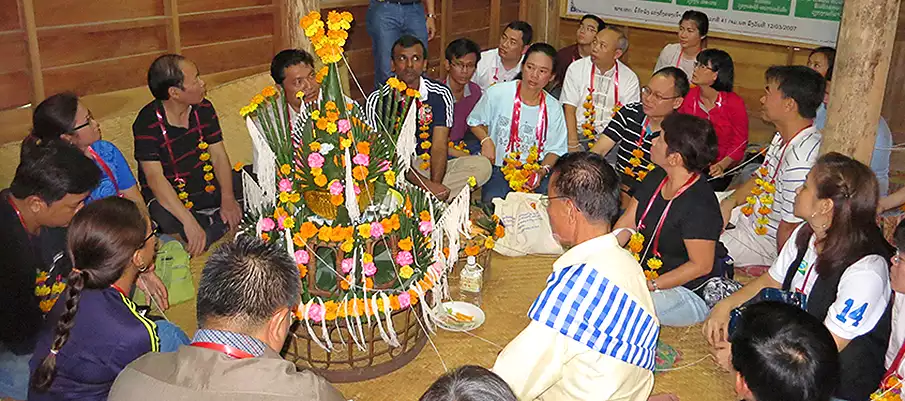
7. Vieng Xai Caves: Hidden Histories
-
- In the rugged landscapes of northern Laos lies a hidden sanctuary of profound historical significance – the Vieng Xai Caves. Carved into the limestone cliffs, these caves are more than mere geological formations; they are the guardians of a tumultuous chapter in Laos‘ past, serving as a refuge for the Pathet Lao during the intense years of the Vietnam War.
- From the early 1960s to the mid-1970s, Vieng Xai Caves were not just shelters, they were an entire clandestine city. Home to government offices, military command centers, schools, hospitals, and theaters, these caves were the heart of the Pathet Lao’s operations. Their strategic location, hidden amidst the rugged karst landscape, provided an ideal cover for the revolutionary forces seeking independence from foreign influence.
- As one ventures into the darkened chambers of Vieng Xai, a palpable sense of history lingers in the air. The walls, once witness to clandestine discussions and wartime strategies, now stand as silent narrators of a nation’s struggle for sovereignty. The resilience of the Lao people is etched into the very stone, telling a story of courage and determination against the backdrop of war.
- Guided tours through the Vieng Xai Caves offer visitors a poignant glimpse into the lives of those who sought refuge within these rocky confines. The echoes of footsteps in the dimly lit passageways evoke a profound sense of the challenges faced by the Pathet Lao forces. The caves, once a clandestine city, are now a living museum, preserving the stories of Laos‘ war-torn past.
8. Wat Phou: Ancient Temple Complex
-
- Nestled at the base of Mount Phou Kao in southern Laos, Wat Phou stands as a timeless testament to the Khmer Empire’s architectural prowess and Laos‘ rich spiritual heritage. Recognized as a UNESCO World Heritage Site, this ancient temple complex unfolds its mystical charm amidst the lush landscapes, inviting visitors to embark on a journey through history.
- Dating back to the 11th century, Wat Phou predates the more renowned Angkor Wat in Cambodia, showcasing the Khmer Empire’s influence in the region. The temple’s intricate carvings, monumental staircases, and expansive courtyards offer a glimpse into the religious and cultural significance of the site.
- Dedicated to the Hindu god Shiva, Wat Phou’s architecture is strategically aligned with the sacred mountain, creating a symbolic connection between the earthly and the divine. Pilgrims and visitors alike ascend the stone steps, passing through ornate gateways and ancient shrines, immersing themselves in the spiritual ambiance that permeates the site.
- The annual festival of „Boun Wat Phou Champasak“ brings Wat Phou to life, attracting devotees and tourists alike. Traditional music, dance, and religious ceremonies transform the ancient ruins into a vibrant celebration, echoing the reverence that has surrounded this sacred site for centuries.
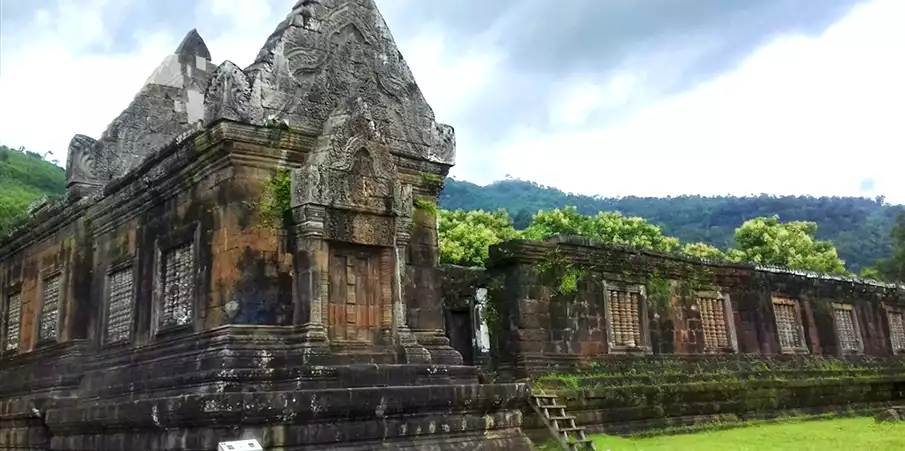
9. The Bolaven Plateau: Coffee Paradise
-
- Perched on the elevated terrain of southern Laos, the Bolaven Plateau emerges as a verdant haven, offering more than just breathtaking landscapes. Renowned as a „Coffee Paradise,“ this plateau is a thriving hub for coffee plantations, inviting enthusiasts and travelers to explore the lush plantations and savor the rich flavors of locally grown beans.
- The fertile volcanic soil and favorable climate of the Bolaven Plateau provide an ideal environment for cultivating high-quality Arabica and Robusta coffee beans. The region’s elevation, ranging from 1,000 to 1,350 meters, contributes to the distinctive taste profiles of the coffee, characterized by a harmonious balance of acidity, aroma, and body.
- Venturing through the Bolaven Plateau unveils a patchwork of coffee plantations, where rows of coffee bushes stretch across the landscape. Visitors can witness the meticulous process of coffee cultivation, from handpicking ripe cherries to the sun-drying of beans, gaining insights into the labor-intensive journey from farm to cup.
- Coffee enthusiasts can indulge in the sensory delights of the Bolaven Plateau by visiting local coffee farms, where they can witness traditional roasting methods and savor freshly brewed cups of aromatic coffee. The plateau’s charming coffee shops and cafes offer a tranquil setting to enjoy a cup while soaking in the panoramic views of the surrounding lush scenery.
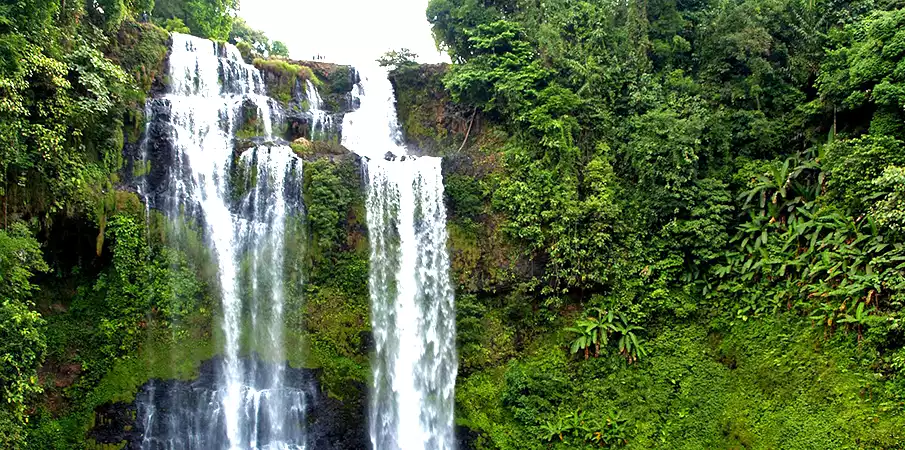
10. Traditional Lao Textiles
-
- In the heart of Laos, the art of traditional textile weaving transcends mere craftsmanship—it is a living testament to the nation’s rich cultural heritage. Woven into the fabric of daily life, Lao textiles are a vibrant expression of identity, history, and the enduring skill of local artisans.
-
- Lao textiles boast a kaleidoscope of colors, intricate patterns, and traditional motifs that narrate stories of the country’s diverse ethnic groups. From the bustling markets to rural villages, the art of weaving is deeply ingrained in Lao culture, passed down through generations as a cherished tradition.
-
- Silk, cotton, and hemp are the primary threads that bring these textiles to life. The intricate process begins with dyeing the threads using natural sources like plants and insects, a technique that imparts a unique character to each piece. The loom, a centerpiece of every traditional Lao household, becomes a canvas for creativity, as skilled weavers bring their visions to fruition.
-
- The iconic „sinhs“, traditional Lao skirts, and „pha sins“, shawls, showcase the exquisite craftsmanship of Lao textiles. Each piece is a labor of love, reflecting the weaver’s artistry and the cultural significance embedded in every pattern. The motifs often depict nature, mythological creatures, or stories from local folklore, creating a visual tapestry that mirrors the soul of Laos.
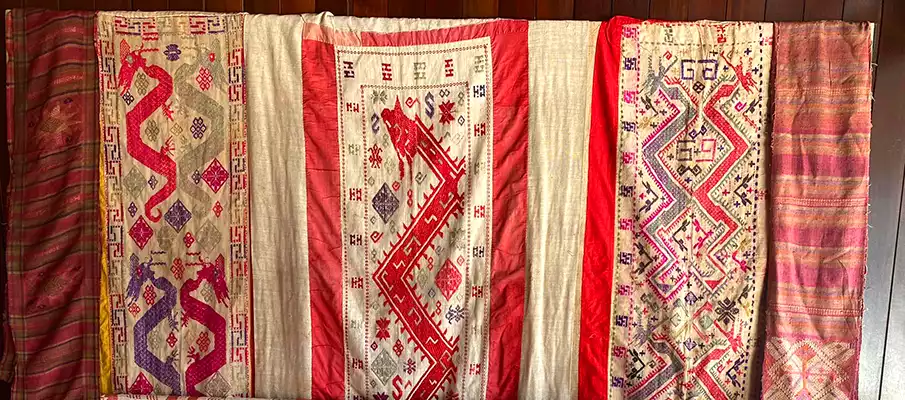
11. Pak Ou Caves: Buddhas in Abundance
-
- Nestled along the Mekong River, the Pak Ou Caves stand as an ethereal sanctuary, cradling a remarkable abundance of Buddha statues within their limestone chambers. Situated near Luang Prabang, this sacred site has drawn pilgrims and curious travelers alike for centuries, offering a unique glimpse into Laos‘ spiritual tapestry.
-
- The Pak Ou Caves, often referred to as the „Caves of a Thousand Buddhas,“ house a multitude of Buddha images in various sizes and postures. Perched within the crevices and recesses of the cave walls, these statues range from small figurines to larger-than-life representations, creating an awe-inspiring display of devotion.
-
- The cave complex is divided into two main chambers: Tham Ting (Lower Cave) and Tham Theung (Upper Cave). Tham Ting, easily accessible by boat, welcomes visitors with a cascade of natural light, illuminating the countless Buddha statues that adorn its shelves. Tham Theung, located higher up and accessible by a stairway, offers a more contemplative atmosphere, where the spiritual aura is heightened by the flickering light of candles.
-
- Devotees and pilgrims frequent the Pak Ou Caves to make offerings and pay homage to the Buddha. The statues, left over the years by generations of believers, symbolize gratitude, reverence, and the continuous flow of spiritual energy within this sacred space.
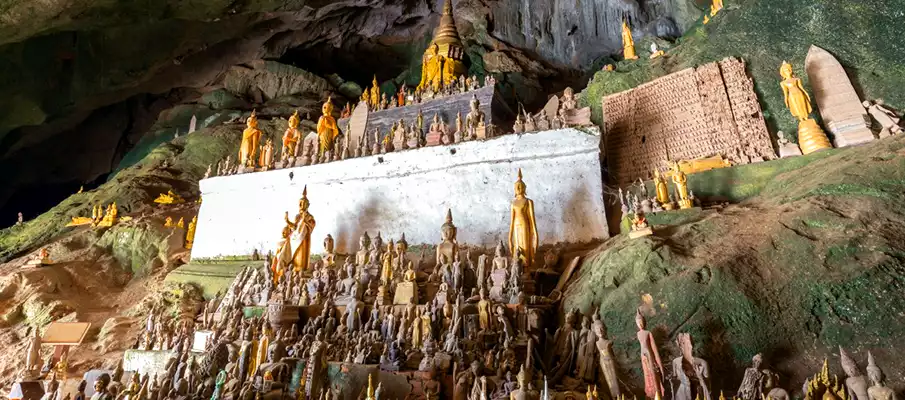
12. Vientiane: Relaxed Capital Charm
-
- In the heart of Laos lies Vientiane, a capital city that embodies the nation’s laid-back spirit. Unlike bustling metropolises, Vientiane unfolds with a relaxed charm, inviting visitors to immerse themselves in its serene ambiance and explore a capital that embraces a slower pace of life.
-
- Wandering through Vientiane’s streets reveals a harmonious blend of French colonial architecture and traditional Lao charm. The Patuxai monument, often dubbed the „Arc de Triomphe of Vientiane,“ stands as a testament to this fusion, offering panoramic views of the city from its elevated vantage point.
-
- The city’s spiritual core is embodied by the serene That Luang stupa, a golden monument that holds great cultural significance. Surrounded by temples and lush gardens, That Luang is a tranquil oasis where locals and visitors alike find solace and reflection.
-
- Vientiane’s Mekong River promenade adds to its allure, providing a scenic backdrop for leisurely strolls and vibrant sunsets. The laid-back atmosphere extends to the city’s markets, where traditional crafts, textiles, and local delicacies can be savored without the rush often associated with larger urban centers.

13. Lao New Year: Water Festival Celebrations
-
- In Laos, the arrival of the traditional New Year marks a time of vibrant festivities known as the Water Festival or „Pi Mai Lao.“ Celebrated in April, this lively event transforms the entire nation into a water-soaked playground, where joyous revelers come together to welcome the new year with exuberance.
-
- The Water Festival is deeply rooted in Lao culture, blending Buddhist traditions with local customs. The highlight of the celebration involves the spirited water fights that take place in the streets. From gentle splashes to elaborate water battles, the laughter and cheers of participants create an atmosphere of communal joy.
-
- Water symbolizes purification in Buddhist traditions, making the Water Festival a fitting way to cleanse the old year’s sins and welcome fresh beginnings. During this time, families gather for prayers at temples, pay respects to their elders, and participate in traditional ceremonies, bringing a sense of spiritual renewal to the festivities.
-
- As the sun-drenched streets transform into lively water arenas, locals and visitors alike join in the revelry, armed with water guns and buckets. The laughter, shouts, and shared camaraderie dissolve barriers, creating an environment where everyone is equal, drenched in the joy of the moment.
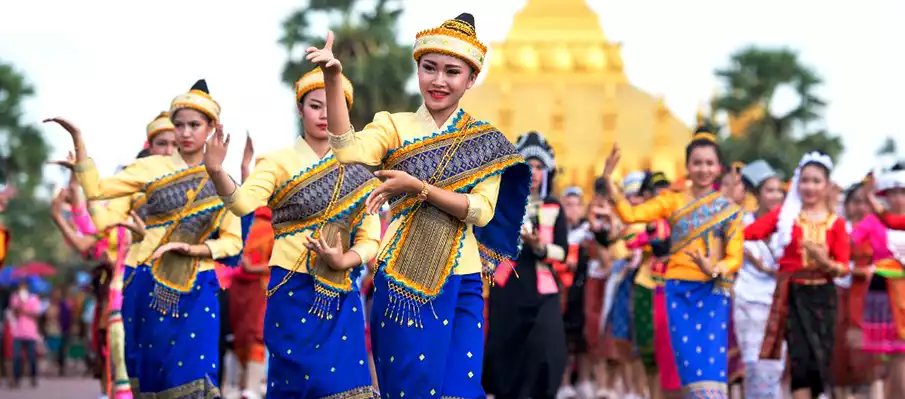
14. Nam Et-Phou Louey National Protected Area
-
- Nestled in the lush landscapes of northern Laos, the Nam Et-Phou Louey National Protected Area stands as a haven for biodiversity and conservation efforts. Covering over 5,000 square kilometers, this pristine sanctuary is a testament to Laos‘ commitment to preserving its natural heritage.
-
- Home to a diverse array of flora and fauna, including endangered species like the Indochinese tiger and white-cheeked gibbon, Nam Et-Phou Louey is a vital habitat for wildlife. The protected area’s rugged terrain, dense forests, and meandering rivers create a biodiverse ecosystem that captivates the imagination of nature enthusiasts and conservationists alike.
-
- One of the distinctive features of Nam Et-Phou Louey is the Nam Nern Night Safari, a unique ecotourism initiative that allows visitors to explore the park’s wonders after sunset. Guided boat tours along the Nam Nern River provide glimpses of nocturnal wildlife, including elusive species like sambar deer, otters, and civets.
-
- The park’s commitment to conservation extends beyond wildlife protection. Local communities play a crucial role in sustainable tourism practices, and revenue generated from ecotourism initiatives is reinvested into community development projects, creating a harmonious balance between conservation and community welfare.
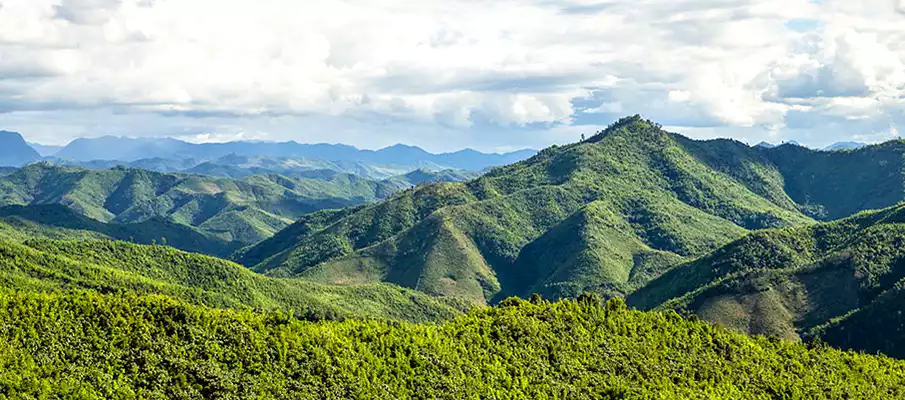
15. Hmong New Year: Cultural Extravaganza
-
- In the hillside villages of Laos, the Hmong people usher in the New Year with an exuberant celebration that is as vibrant as it is culturally rich—the Hmong New Year. This annual festival, deeply rooted in the Hmong ethnic group’s traditions, transforms communities into lively hubs of color, music, and cultural pride.
-
- The Hmong New Year typically takes place in December or January, marking the end of the harvest season and the beginning of a new agricultural cycle. It is a time for families to reunite, express gratitude for the year’s bounty, and partake in a myriad of festive activities that showcase the richness of Hmong heritage.
-
- Central to the celebration is the traditional ball-tossing game called „pov pob“. Participants clad in traditional Hmong attire engage in this lively game, tossing a cloth ball back and forth in a circle while dancing and singing traditional songs. The game symbolizes the continuous cycle of life, the unity of the community, and the hopes for a prosperous future.
-
- The Hmong New Year is a feast for the senses, with traditional music, dance, and elaborate costumes taking center stage. Intricately embroidered clothing, silver jewelry, and vibrant headpieces create a kaleidoscope of colors, reflecting the cultural diversity and artistic prowess of the Hmong people.
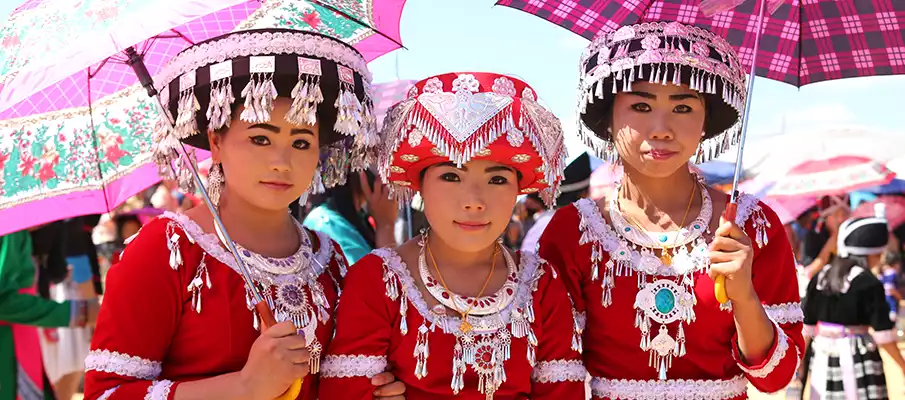
❓ Questions + Tips – Interesting Facts about Laos:
1. What are the major cultural attractions in Laos?
-
- The major cultural attractions in Laos include Luang Prabang, a UNESCO World Heritage site with regal temples like Wat Xieng Thong and the Royal Palace. The daily almsgiving ceremony is a spiritual tradition. Vientiane features the Patuxai Victory Monument and Wat Sisaket. The Plain of Jars in Xieng Khouang adds an archaeological touch to Laos‘ cultural landscape. These sites offer insights into Laos‘ spiritual, royal, and historical heritage.
2. What is the significance of Luang Prabang in Laos?
-
- Luang Prabang, cradled at the confluence of the Mekong and Nam Khan rivers, stands as a living testament to Laos‘ cultural and spiritual heartbeat. Its UNESCO status underscores its pivotal role as the former royal capital. The town’s architectural grandeur, exemplified by the Royal Palace and Wat Xieng Thong, transports visitors to a bygone era. The daily almsgiving ceremony further elevates the spiritual ambiance, offering a tangible connection to Laos‘ profound spiritual heritage.
3. Are there any natural wonders in Laos worth exploring?
-
- Laos unfolds its natural wonders with the breathtaking Kuang Si Falls near Luang Prabang. The cascading turquoise waters, cradled amidst lush greenery, create a mesmerizing tableau. Venturing to the enigmatic Plain of Jars in central Laos reveals a landscape adorned with ancient stone jars, their purpose shrouded in mystery, inviting contemplation about the civilizations that once graced these lands.
4. What is the mysterious Plain of Jars in Laos?
-
- The Plain of Jars, a canvas of ancient mystique in Xieng Khouang Province, beckons with its enigmatic allure. Thousands of colossal stone jars, believed to have originated in the Iron Age, populate the landscape, sparking curiosity about their original purpose and the societies that sculpted them. This archaeological marvel stands as a testament to Laos‘ rich historical depth.
5. What role does the Mekong River play in Laos?
-
- The Mekong River, more than a waterway, is Laos‘ lifeblood, sculpting landscapes and nurturing communities along its banks. Embarking on a leisurely boat cruise along the Mekong unveils a living tableau of traditional villages, lush landscapes, and the authentic rural existence sustained by the river’s generosity.
6. Are there any traditional festivals in Laos that I should experience?
-
- Boun Pi Mai, the Lao New Year, unfolds as a kaleidoscope of cultural exuberance every April. The festivities, marked by spirited water fights, vibrant processions, and solemn temple ceremonies, symbolize purification and renewal. Experiencing this three-day celebration provides a poignant immersion into Laos‘ communal and spiritual ethos.
7. What is the historical significance of the capital, Vientiane?
-
- Vientiane, the laid-back capital, narrates Laos‘ historical odyssey through its architectural landmarks. The Patuxai Victory Monument, reminiscent of the Arc de Triomphe, stands as a symbol of Laos‘ struggle for independence. Wat Sisaket, a haven of ancient murals and Buddha images, echoes the spiritual resonance of Vientiane’s past, blending diverse influences into a captivating narrative.
8. Are there any unique cultural practices in Laos?
-
- Laos unveils its unique cultural tapestry through practices like the Baci ceremony. This traditional Lao ritual involves the binding of white strings around wrists to symbolize the connection of spirits during significant life events. This ceremony not only offers a glimpse into local customs but also signifies the deep-rooted communal bonds cherished by the people of Laos.
9. What is the role of Buddhism in Laotian culture?
-
- Buddhism plays a central role in Laotian culture, shaping daily life and influencing art, architecture, and festivals. Monks clad in orange robes are a common sight, and exploring Buddhist temples offers insight into the spiritual heart of the country.
10. What is the biodiversity in Laos?
-
- Laos is home to diverse ecosystems and a wealth of biodiversity. The Nam Et-Phou Louey National Protected Area, for example, is a haven for endangered species such as tigers and elephants, offering opportunities for eco-friendly and responsible wildlife tourism.
11. What makes the Bolaven Plateau a notable destination?
-
- The Bolaven Plateau is known for its stunning landscapes, waterfalls, and traditional coffee plantations. Travelers can explore lush greenery, visit local villages, and indulge in the unique coffee culture that has emerged in this elevated region.
12. Can you share some insights into traditional Laotian cuisine?
-
- Laotian cuisine is a delightful exploration of flavors, featuring sticky rice, fresh herbs, and a variety of dishes influenced by neighboring countries. Must-try dishes include Laap, a minced meat salad, and Tam Mak Hoong, a spicy green papaya salad.
13. How does Laos differ from its neighboring Southeast Asian countries?
-
- Laos distinguishes itself with a more laid-back and tranquil atmosphere compared to some of its bustling neighbors. The country’s landscapes, characterized by mountains, rivers, and dense forests, contribute to its unique charm.
14. Are there any off-the-beaten-path destinations in Laos?
-
- Yes, destinations like Kong Lor Cave, a colossal limestone cave with an underground river, and Nong Khiaw, a picturesque town nestled between limestone cliffs, offer off-the-beaten-path experiences, providing a glimpse into Laos‘ hidden treasures.
15. How to explore Laos – What are the transport options?
-
- In Laos you can use various seat or sleeper buses, private minivans or minibuses, domestic flights, modern fast train by Lao-China Railway (check Laos Train Map), boats on Mekong River or there are various private taxi companies in the big cities or you can use ride-hailing apps like Loca Taxi Booking, Grab or Go-Jek.
16. What is the weather and climate in Laos?
-
- Weather in Laos varies between distinct wet and dry seasons. The wet season, prevailing from May to October, brings heavy rainfall and heightened humidity, contributing to lush landscapes and abundant rivers. In contrast, the dry season, spanning from November to April, features lower humidity and cooler temperatures, making it an ideal time for travel with clear skies and enjoyable outdoor activities.
17. What is the official currency of Laos and how to exchange money?
-
- The official currency of Laos is the Laotian Kip (LAK). Travelers can exchange money at various locations, including banks, currency exchange offices, and some hotels. While banks might offer better exchange rates, they often have more restricted operating hours. It’s advisable to keep an eye on the current exchange rates and, if possible, conduct larger transactions at banks for potential cost savings. Additionally, some establishments may accept U.S. dollars or Thai baht, especially in larger cities, but it’s generally recommended to have the local currency.
BOOK a TOUR / ACTIVITY in Laos ➜
| Interesting Things and Facts about Laos: | Detailed Descriptions |
|---|---|
| 1. Luang Prabang’s UNESCO Heritage: |
Nestled in the heart of Laos, Luang Prabang is a UNESCO World Heritage site renowned for its well-preserved architecture, monasteries, and vibrant cultural heritage. Explore the charming streets lined with traditional wooden houses, witness daily alms-giving ceremonies, and visit the exquisite temples. Luang Prabang encapsulates the essence of Laotian spirituality and provides a serene retreat for travelers seeking a cultural haven amidst the lush landscapes. |
| 2. Mekong River’s Tranquil Journey: |
The Mekong River, flowing through Laos, offers a tranquil journey through picturesque landscapes and traditional river life. Embark on a slow boat cruise to witness the daily rhythms of riverside villages, lush greenery, and scenic mountains. The Mekong is not just a waterway; it’s a lifeline connecting communities and providing a serene backdrop for exploration, making it an essential part of Laos’s natural and cultural tapestry. |
| 3. Plain of Jars‘ Enigmatic Megaliths: |
Unravel the mystery of the Plain of Jars, an archaeological marvel scattered across the Xieng Khouang Plateau. These ancient megalithic jars, believed to date back to the Iron Age, pose questions about their origin and purpose. Explore the enigmatic site, surrounded by lush landscapes and historical significance. The Plain of Jars stands as a testament to Laos’s rich archaeological heritage and invites curious minds to contemplate the secrets of the past. |
| 4. Vientiane’s French Colonial Charm: |
Discover the laid-back capital city of Vientiane, where French colonial architecture meets traditional Laotian charm. Stroll along the Mekong River, visit the iconic Patuxai Victory Monument, and explore the tranquil temples. Vientiane offers a unique blend of historical influences and modern simplicity, creating a cityscape that reflects Laos’s journey through time and its harmonious coexistence of past and present. |
| 5. Bolaven Plateau’s Coffee Paradise: |
Embark on a sensory journey in the Bolaven Plateau, a coffee lover’s paradise in southern Laos. Explore the lush plantations, where coffee beans thrive in the cool highland climate. Engage with local communities, learn about traditional coffee production, and savor the rich flavors of Laos’s homegrown coffee. The Bolaven Plateau not only offers a scenic retreat but also provides a delightful experience for those seeking the perfect cup in the heart of Southeast Asia. |
| 6. Kuang Si Falls‘ Turquoise Cascades: |
Immerse yourself in the natural beauty of Laos at Kuang Si Falls, a stunning cascade of turquoise-colored water nestled in the lush jungles near Luang Prabang. Hike through scenic trails, swim in the refreshing pools, and witness the breathtaking beauty of multi-tiered waterfalls. Kuang Si Falls showcases the pristine landscapes of Laos and provides a rejuvenating escape into the heart of untouched nature. |
| 7. Traditional Laotian Textiles: |
Experience the artistry of traditional Laotian textiles, a craft deeply woven into the cultural fabric of the country. Visit local markets and villages to witness skilled weavers crafting intricate patterns and designs. Laotian textiles, with their vibrant colors and symbolic motifs, reflect the rich cultural heritage and artistic prowess of the Laotian people. Each piece tells a story, preserving the traditions that have been passed down through generations. |
| 8. Wat Phou’s Ancient Grandeur: |
Step back in time at Wat Phou, a UNESCO World Heritage site showcasing ancient Khmer architecture and religious significance. Explore the temple complex, which predates Angkor Wat, and marvel at the intricate carvings and panoramic views of the Mekong River. Wat Phou exemplifies the historical grandeur of Laos, serving as a testament to the cultural and architectural richness that has flourished along the banks of the Mekong for centuries. |
| 9. Almsgiving Traditions in Luang Prabang: |
Participate in the sacred almsgiving ceremony in Luang Prabang, a tradition that has endured for centuries. Wake up early to witness saffron-robed monks collecting alms from devout locals and visitors along the serene streets. Engage in this spiritual practice with respect and mindfulness, gaining insights into Laos’s deep-rooted Buddhist traditions and the daily rituals that contribute to the spiritual harmony of the community. |
| 10. Lao Cuisine’s Culinary Delights: |
Indulge in the flavors of Lao cuisine, a gastronomic journey that reflects the country’s diverse cultural influences. Sample sticky rice, a Laotian staple, and explore dishes infused with aromatic herbs and spices. From savory laap salads to the tantalizing tam mak hoong (papaya salad), Lao cuisine delights the taste buds with its unique combinations. Engage in a culinary adventure, trying local delicacies in street markets, family-run eateries, and traditional restaurants that showcase the authentic flavors of Laos. |
Solo Travel – Cambodia|Solo Travel – Malaysia|Solo Travel – Thailand|Interesting Things – Vietnam|Best Islands – Vietnam|Best Islands – Thailand
